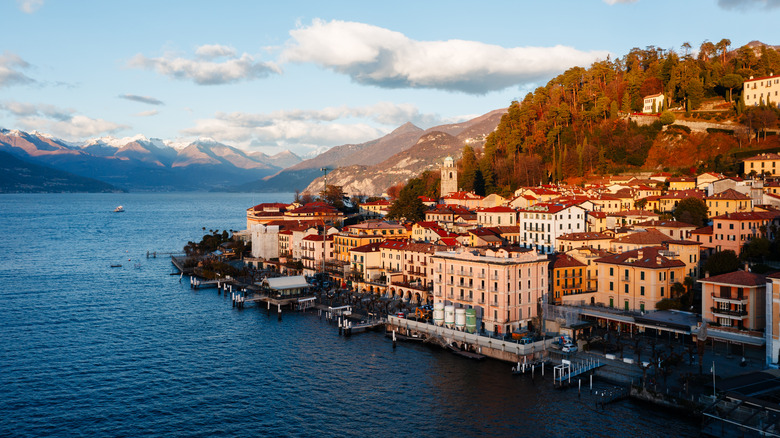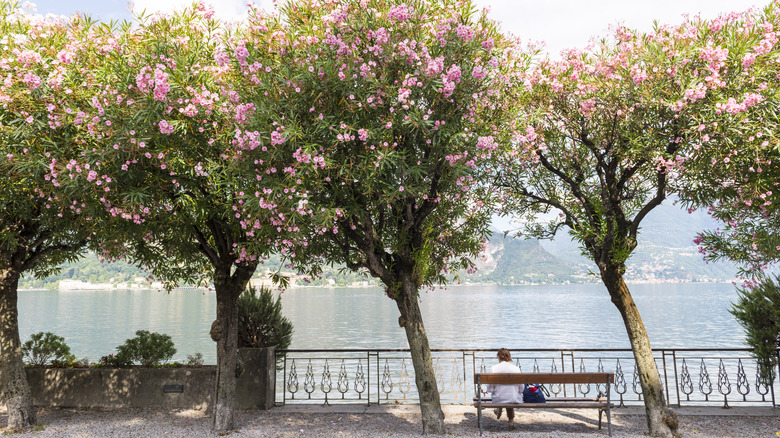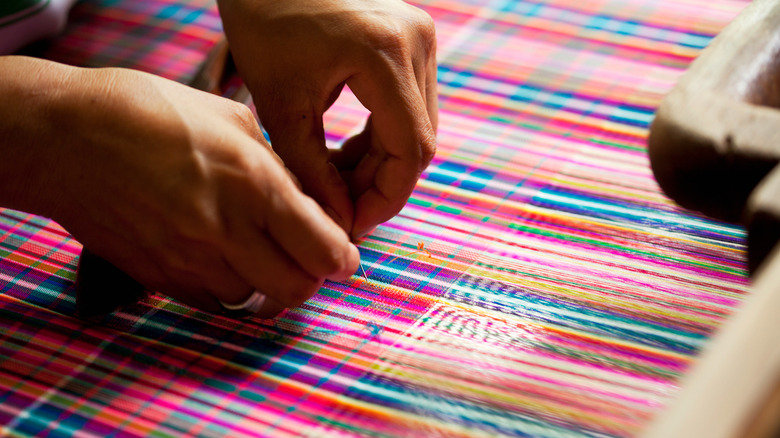One Of Lake Como's Best Tourist Attractions Is An Underrated Museum All About Fashion
Owing to its stunning landscapes, water, and villas, it's no wonder Lake Como is a romantic getaway destination for many. But the lake also harbors a hidden gem dedicated to the art and science of fashion: Museo della Seta, or the Silk Museum, offers visitors a unique journey through the region's rich textile heritage, combining historical significance with modern innovation. The museum claims to be the only place in the world where you can learn the entire silk production process, from the practice of extracting silk from silkworms to coloring yarns and finally to silk's use in fashion. Today, the museum stands as a testament to Como's enduring legacy in the world of high-end textiles.
The museum, which opened in 1990, is designed to illustrate the complete history of silk fabric production, including the cultivation and refinement process involving spinning, weaving, dyeing, and printing. This journey is showcased through a substantial collection of machines, technical equipment, and various tools used through time.
Como's deep-rooted connection with silk dates back centuries, establishing it as a prominent silk production hub in Europe. The Silk Museum celebrates this legacy, showcasing the intricate processes and exquisite craftsmanship that have defined the region's silk history. Visitors can explore the museum by booking tickets online from €12 (about $13) for adults and €5.40 for children over the age of 5, and family and concession prices are available, making this a great day out even when exploring Italy on a budget. Its opening hours are between 10 a.m. and 6 p.m. with a break between 1 and 2 in the afternoon, and the museum is not open on Mondays.
The history of Como's silk industry
Como's silk legacy began in the 15th century, when Ludovico Sforza, then the Duke of Milan, had mulberry trees planted around Lake Como. This initiative helped encourage and support the cultivation of silkworms, which feed on the leaves of mulberry trees. Sforza laid the groundwork for an industry that would become synonymous with the region for many years to come. By the early 18th century, Como had established itself as Italy's primary silk producer, facilitated by the adoption of mechanical production methods that replaced traditional techniques and significantly increased efficiency.
The industry experienced another significant boost in the 1860s with the establishment of a prestigious school dedicated to training skilled silk craftsmen. The school has been instrumental in educating generations of Italy's most talented silk masters, a tradition that continues to this day. This prominence in silk production grew steadily, reaching a pinnacle in 1972 when Como's silk industry surpassed both China and Japan in output.
The Como region is a powerhouse of silk production today. Per the Italian Tribune, "Como annually produces 3,200 tons of silk, representing 85% of all silk made in Italy and [...] 70% of Europe's silk." The quality and prestige of Como's silk have attracted some of the world's most renowned fashion houses, too, from Yves Saint Laurent to Versace.
Experience interactive exhibits at the Como Silk Museum
The Silk Museum in Como showcases contemporary textile innovation. Visitors to the museum can engage in interactive experiences, like live demonstrations of silk weaving and hands-on silk-related crafts, that bring the art of silk-making to life. Each exhibit has English and Italian descriptions, and Tripadvisor reviewers said they spent between one and three hours on average browsing the displays and listening to the audio guide.
The museum features a range of exhibits on modern textile technology, illustrating the industry's evolution to meet contemporary demands through displays of machinery, looms, and materials. These displays, from advanced dyeing techniques to cutting-edge fabric designs, highlight Como's continued relevance in the global fashion industry. The museum's commitment to innovation ensures that its visitors gain insights into both traditional and modern methods of silk production and promise an enlightening and enjoyable experience.
To make the history and ongoing innovation of Como's silk industry accessible to all, the museum offers tours and workshops for both adults and children. The museum also provides extensive historical documentation, including a digital archive, library, and vintage photographs, detailing the economic, social, and urban development of Como, which the textile industry has profoundly influenced. This approach allows visitors of all ages to understand the scope of silk's impact on this beautiful region. There is a shop on site too, but if you want to shop in town for fine silk products, consider checking out stores like Azalea Silk of Como or Bellagioseta. If you want to continue your Italian adventures and explore beyond Como, we recommend a trip to the charming city of Siena.


